Using Decision Graph - Retargeting Pixels
Retargeting is a highly effective e-commerce marketing strategy that turns window shoppers into paying customers by serving specific personalised ads to those who have previously visited your website pages. |
Let's set up a campaign using retargeting pixels. Here, we'll create a campaign with the strategy described below.
MeowWoofShack, a retail pet-care brand, would like to use Jivox’s personalization capabilities to setup a retargeting campaign. The campaign would target pet owner audiences who visit their website by tracking the products they viewed on different pages. The campaign would involve personalized product images and product prices that would be shown to different audiences. Multiple personalized creatives will be served to the audiences based on their last viewed products. |
Personalization Data Triggers used
- Audience Information - Cart Abandoners, Product Page Dropouts, Home Page Dropouts
- Retargeting Pixels - Jivox Pixel 1, Jivox Pixel 2, Jivox Pixel 3
- Data Signal - DSP Data Signal
Dynamic Assets of the Ad
The ads would personalize the background image, copy, product image and product price. Add info about audience, product id etc.
Creative Master Design
The Ad consists of two frames as shown in the image below. The background image, product image, copy and product price are personalized for the selected audience segments.
Details of the Ad
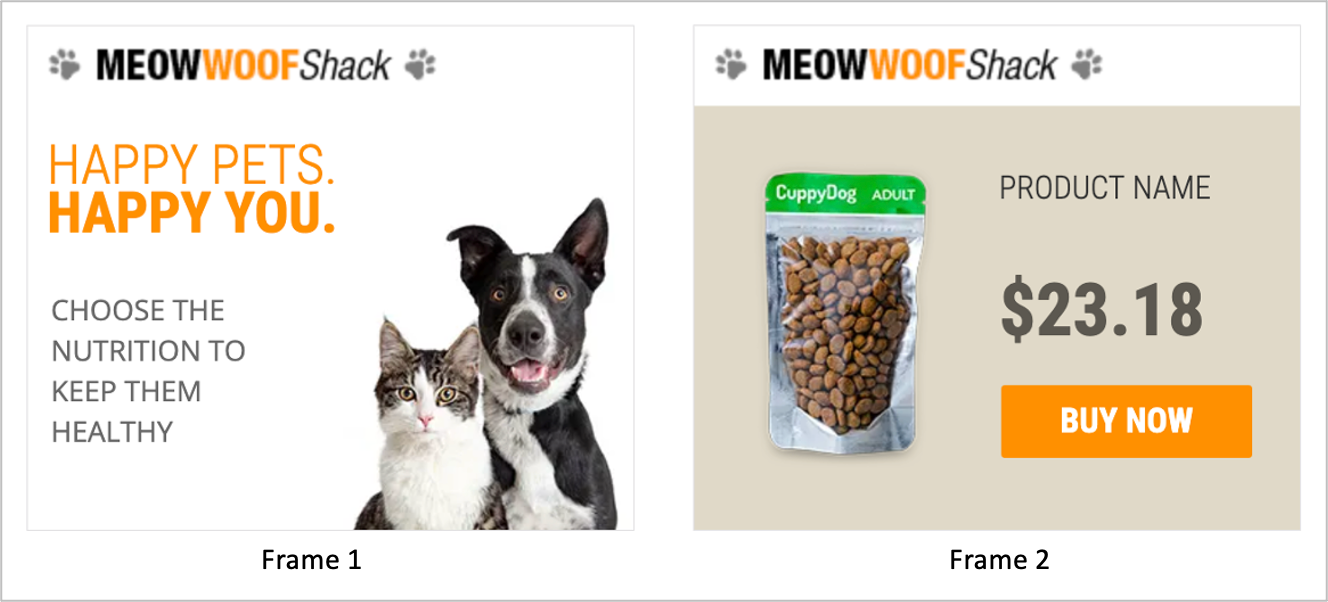
Below is the Mapping Document that defines the strategy for this campaign. As you can see, the Mapping Document specifies the Background Image, Copy, Product Image, Product Price and other assets against each Audience Segment. Make sure that the Creative Name in the Asset Source matches exactly with the Reporting Name here. This will help the system identify and serve the specific creatives that match the conditions.
You can download the mapping document from the Resource section below.
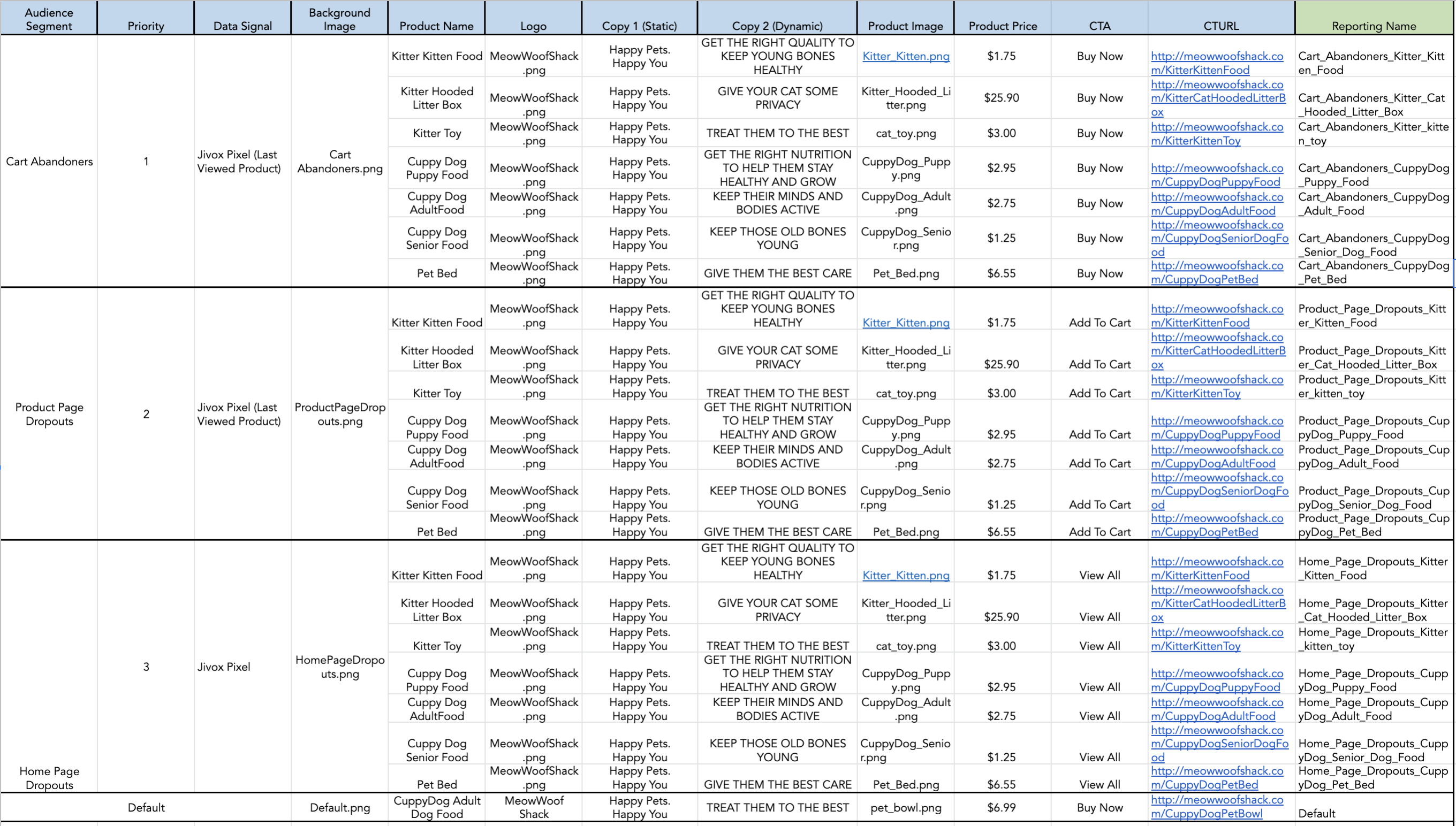
Using the information in the Mapping Document the different creative variations have already been generated using Jivox's Dynamic Canvas Studio. If you haven't done this yet, use the Creative Master and Assets provided in the Resources section and follow the steps detailed in the Creating a Display Ad section. |
For this campaign, here's what the Asset Source looks like. As you can see, the Creative Name in the Asset Source is exactly same as the Reporting Name specified in the Mapping Document.
You can download the Asset Source from the Resources section below.
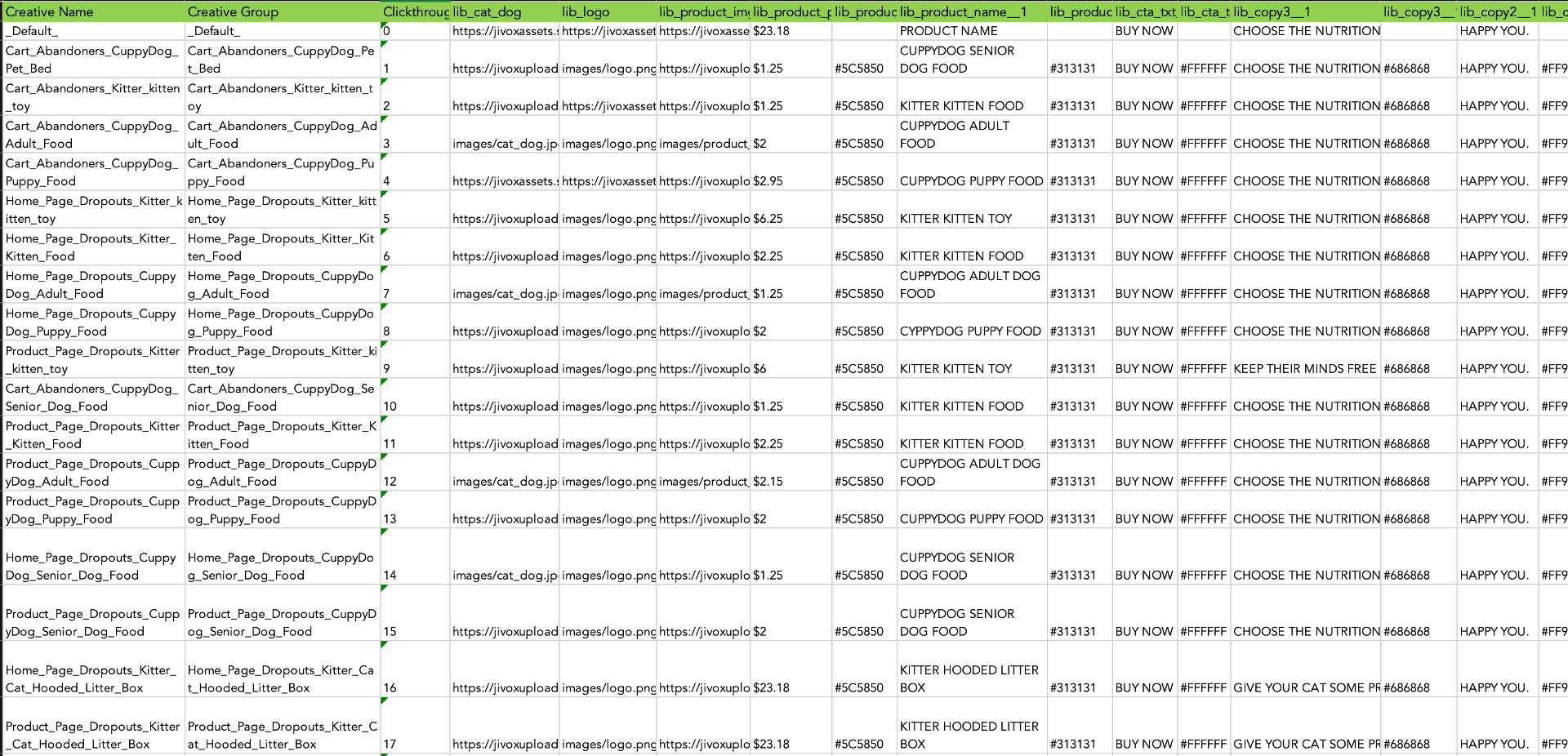
As you can see, we have six different products to be shown for each page. For each page, we will create a retargeting pixel and track upto four latest viewed products. Let's begin!
Generating Retargeting Pixels
First, we will create three retargeting pixels, based on the three different pages for which the audience activity will be tracked (as mentioned in the mapping document) - Home Page, Product Page and Cart.
On the platform, select Retargeting Pixels from the left pane.

Here, we'll create the three retargeting pixels.
On the Retargeting Pixels page, let's enter the following details:
- From the Retargeting Group drop-down, select group1.
- Select Add from Action drop-down.
- Enter 90 in the Expire After in Day(s) field.
- Enter 4 for Max Values. This determines the number of values to be stored in the pixel.
- In the Page Macro/Variable field, enter {Product_ID}.
- Enter the pixel name Home Page for Alias.
- Enter a description.
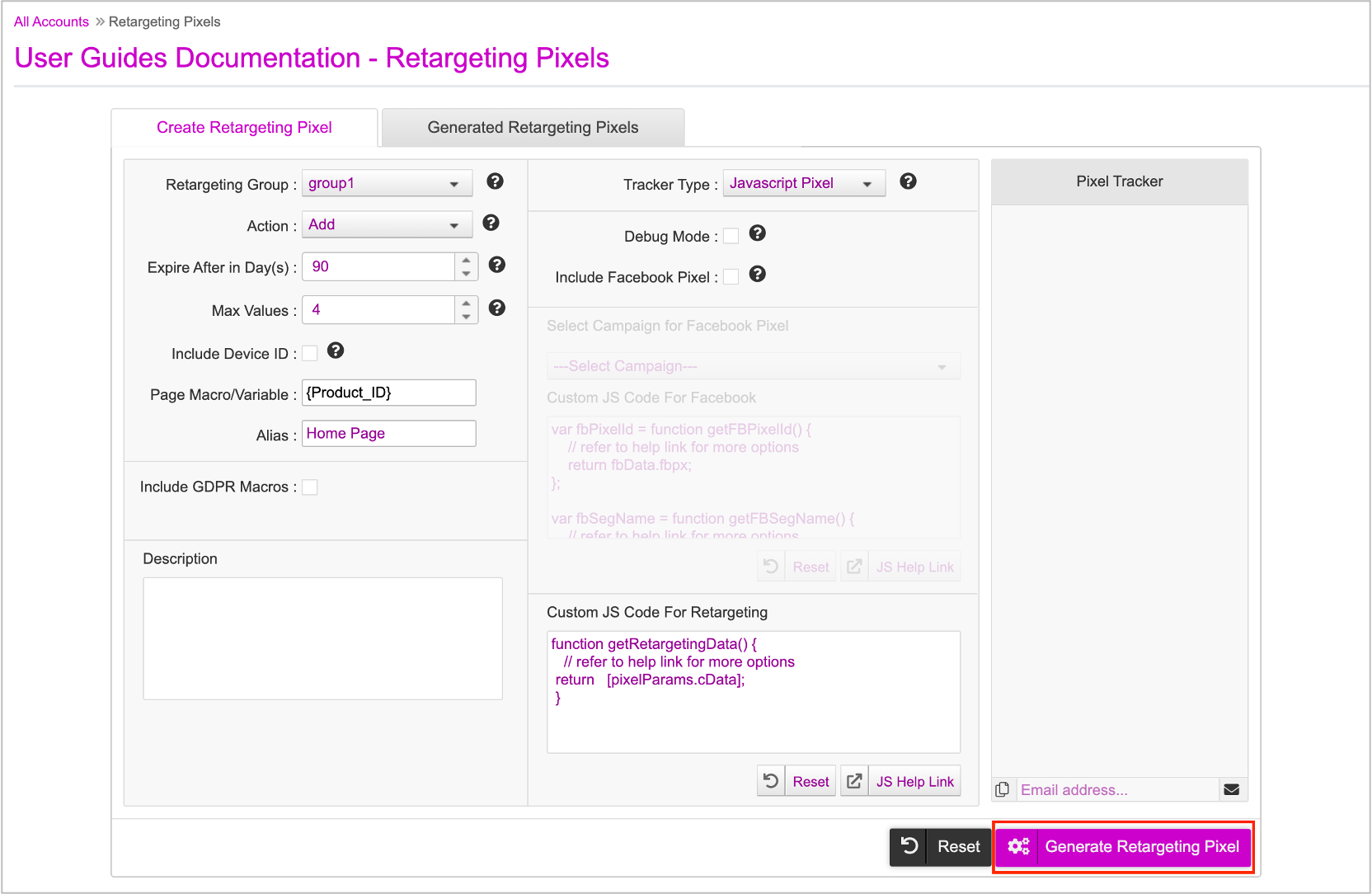
Next, from the Tracker Type drop-down, select Javascript Pixel.
Once you've entered all the details, click Generate Retargeting Pixel.

You will be able to see the generated script for the pixel in the Pixel Tracker column. You can add an email address here to send the details.
Now let's follow the same steps and create the other two pixels. We will use the same parameters except the values for Retargeting Group and Alias fields:
- group2 for Product Page
- group3 for Cart
You can view the generated pixels by clicking the Generated Retargeting Pixels tab.

For more details on creating retargeting pixels, see Retargeting Pixels.
Now that we have generated the three retargeting pixels, let's go ahead and set up the campaign.
On the left pane, click Campaigns to be retargeted to the Campaigns page.
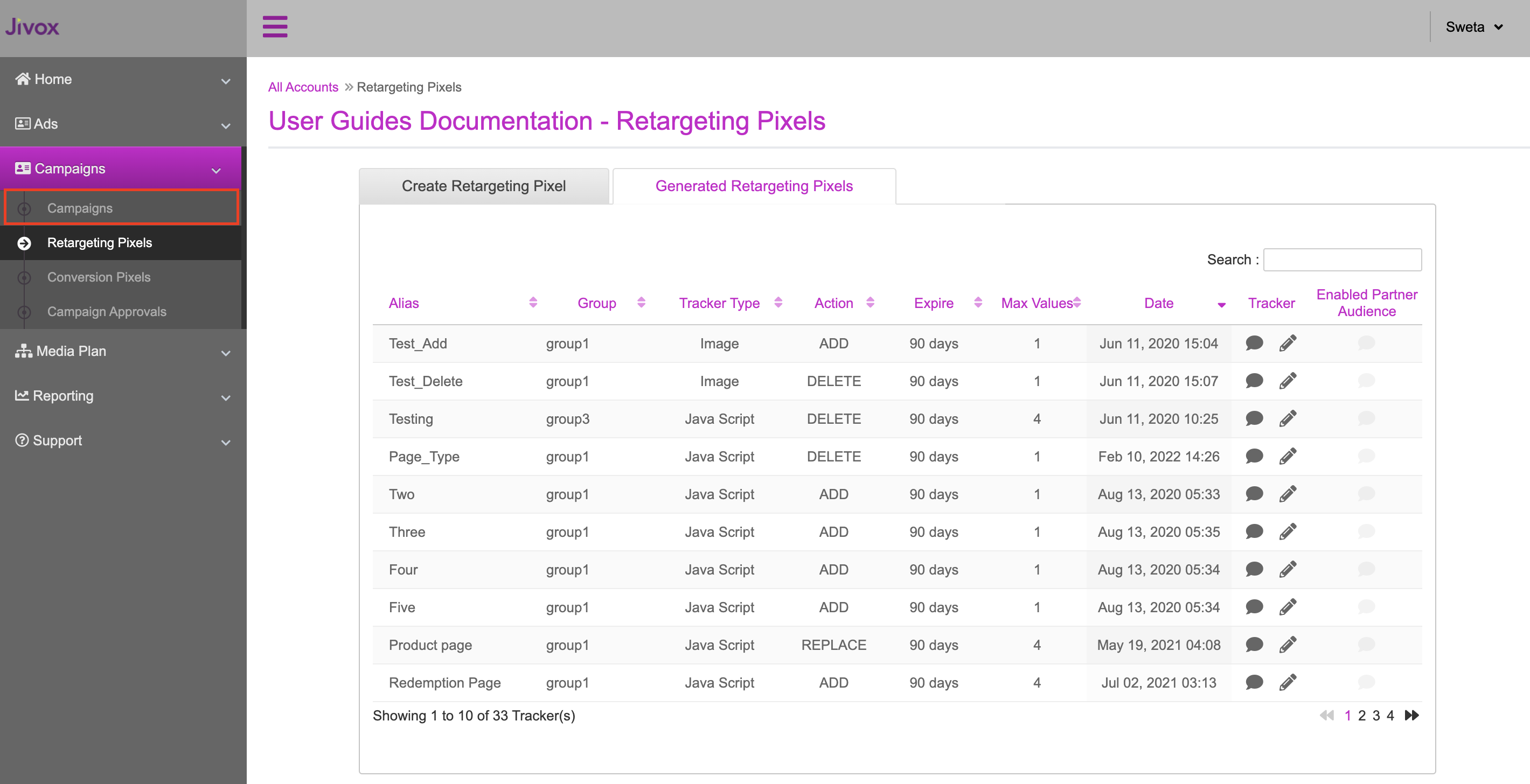
Setting Up Retargeting Campaign
On the Campaigns page, let's select Create New Campaign.
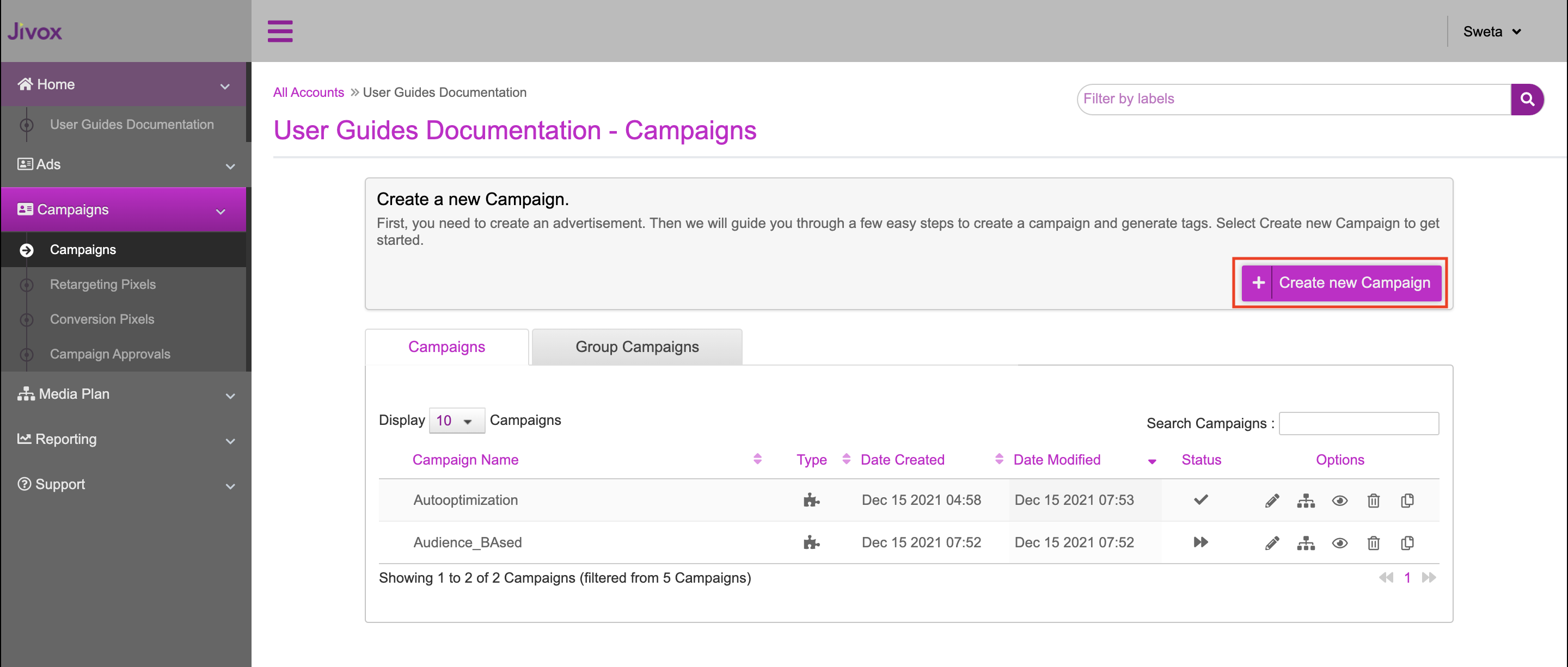
We'll be redirected to the Create Campaign page. The Manage Segments tab under Dynamic Campaign section is displayed.
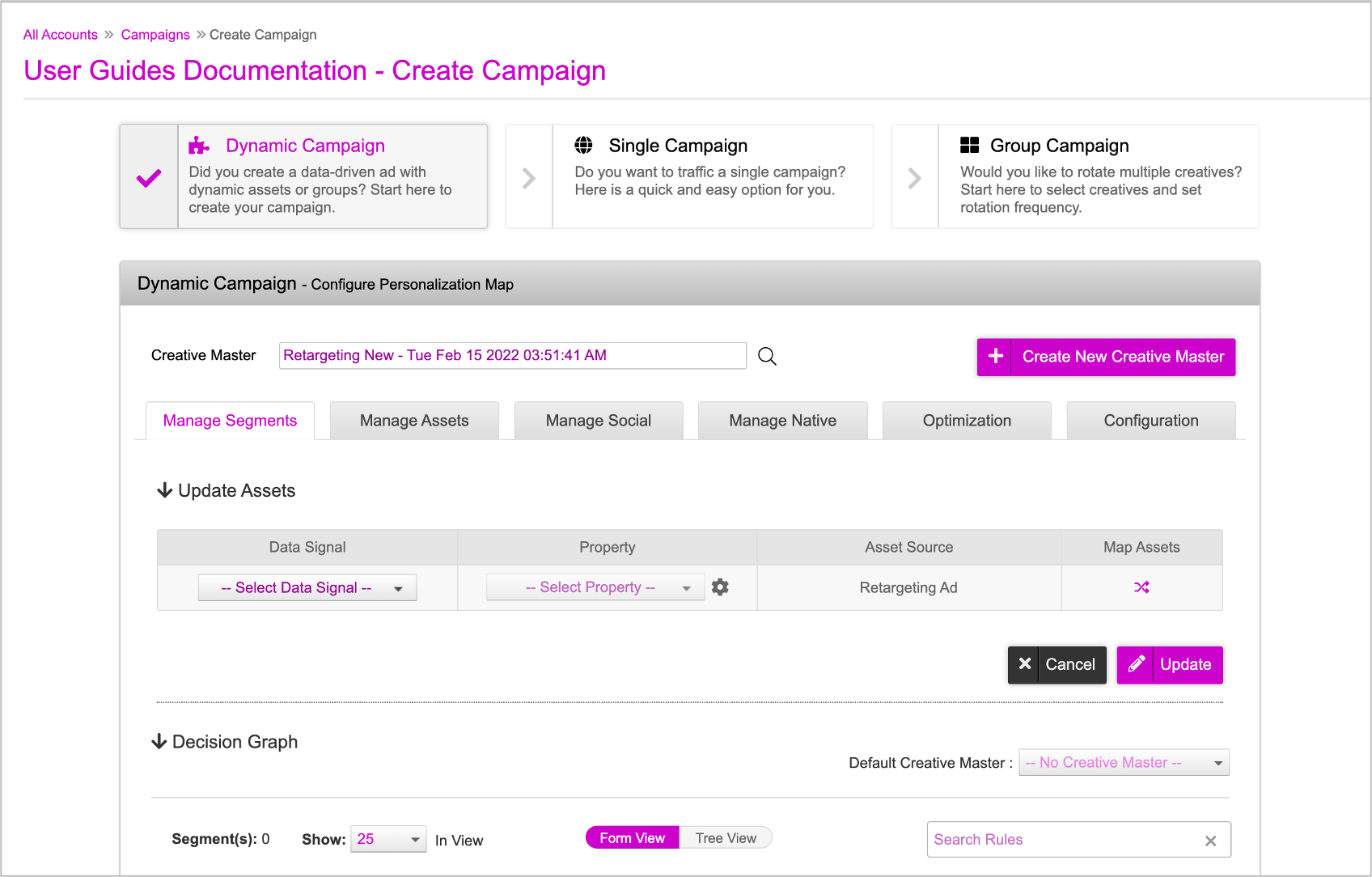
Here, we'll use a Decision Graph for this campaign.
1- Apply the below settings in the Update Assets section:
- Select Decision Graph as the Data Signal
- Keep the ‘Selected Segment’ property as is
- You can view all the mappings by clicking the icon in the Map Assets column.
2- Click Update. The asset source and data signal mapping process is now complete and the Decision Map is configured.
3- Next, let's scroll down to the Decision Graph section, and set the Priority to Rotate. Make sure the Priority is set to Rotate
4- Click the New button to add Segments.
Here, we will create 18 segments, one for each Creative Variation as listed in the Asset Source.
Ensure that the segment name exactly matches the Creative Name/Creative Group in the Asset Source. To avoid making any error, copy the Creative Name from the Asset Source and paste it directly to the Segment. |
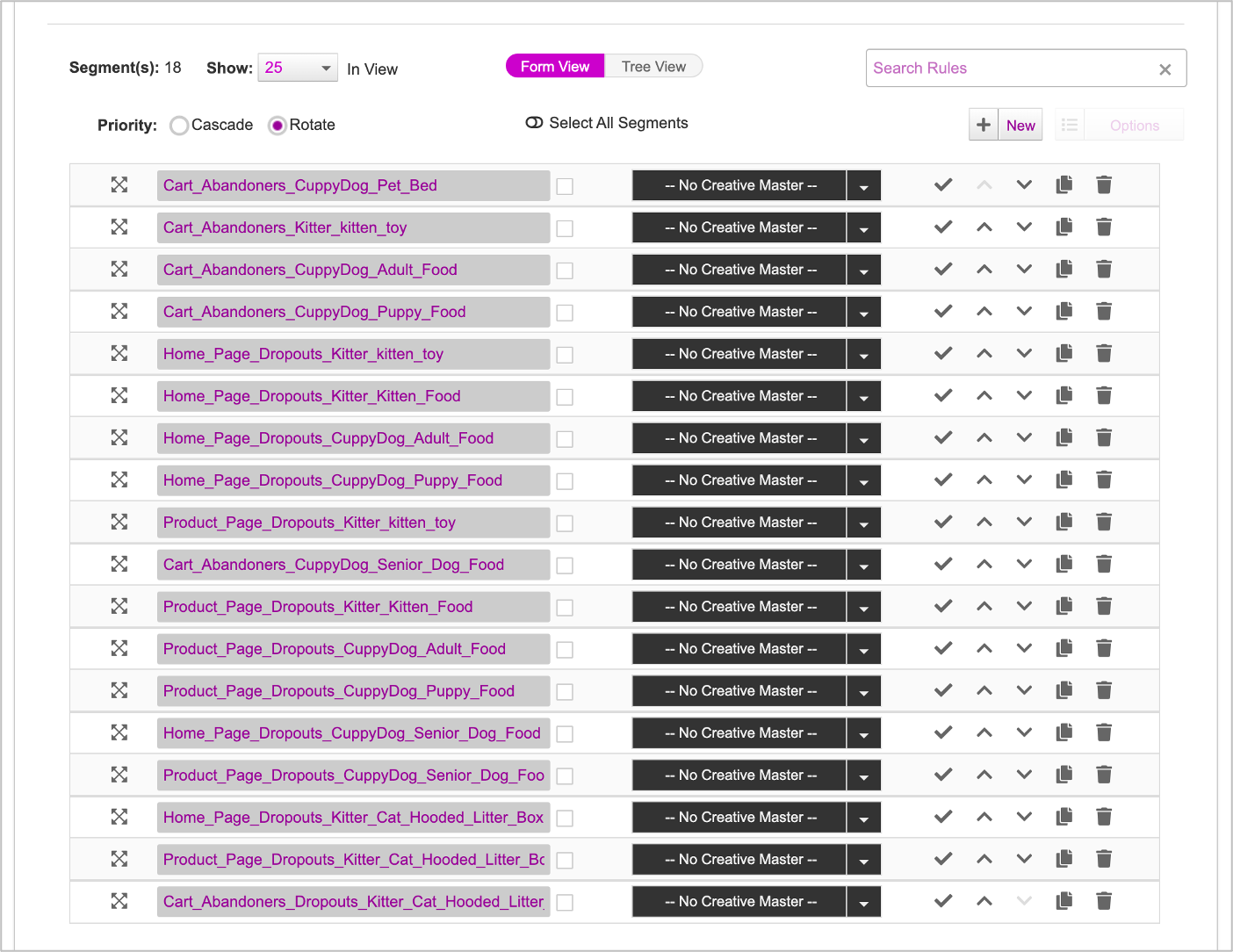
Click the icon to the left of Cart_Abandoners_CuppyDog_Pet_Bed. This will bring up a screen that will allow you to apply various types of decisioning. In this example, we will be using the triggers and conditions as per the mapping document.
For each segment, we need to define the conditions and triggers as stated below:
| Condition - Any of these Match |
|---|
| Sequential and Retargeting || Retargeting Cookie || Is Equal To || {Retargeting Pixel Name} |
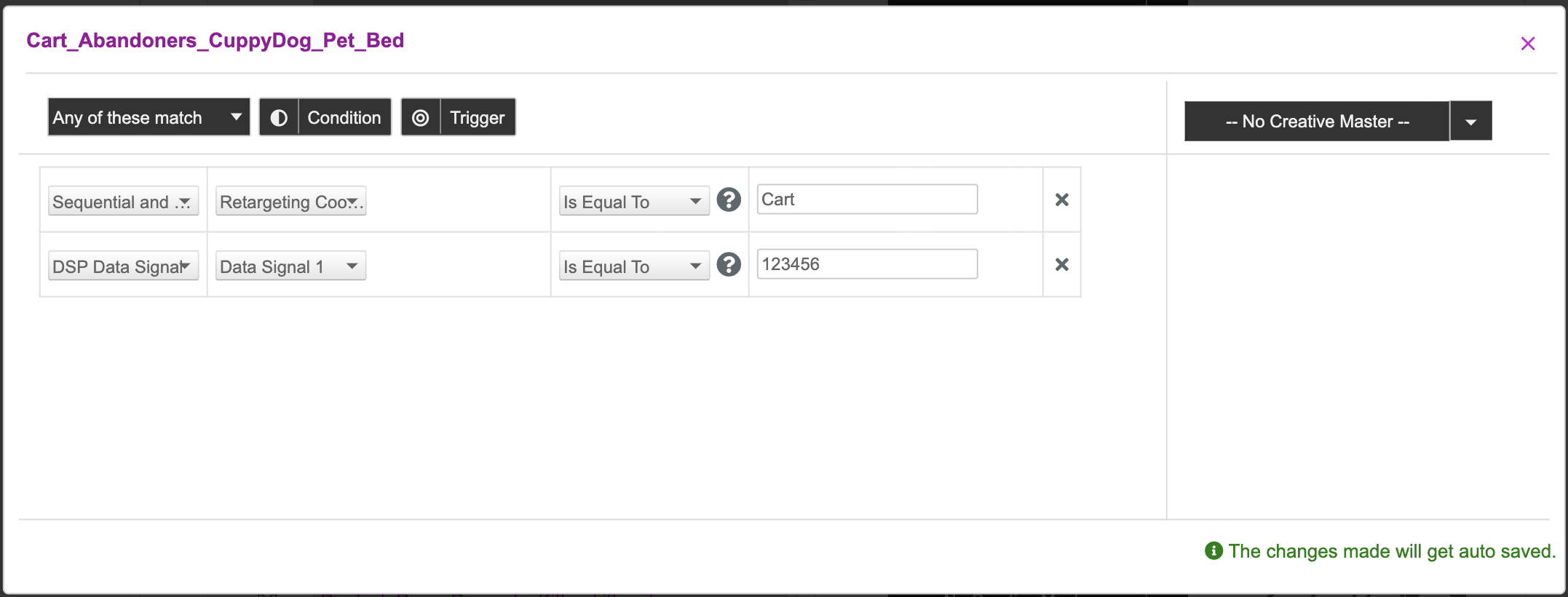
For details on how to set up the conditions for each segment, see Adding Conditions and Triggers in the Using Decision Map section.
Now that we've updated the conditions and triggers for each segment, let's go ahead and review the decision graph by checking out the Tree View.
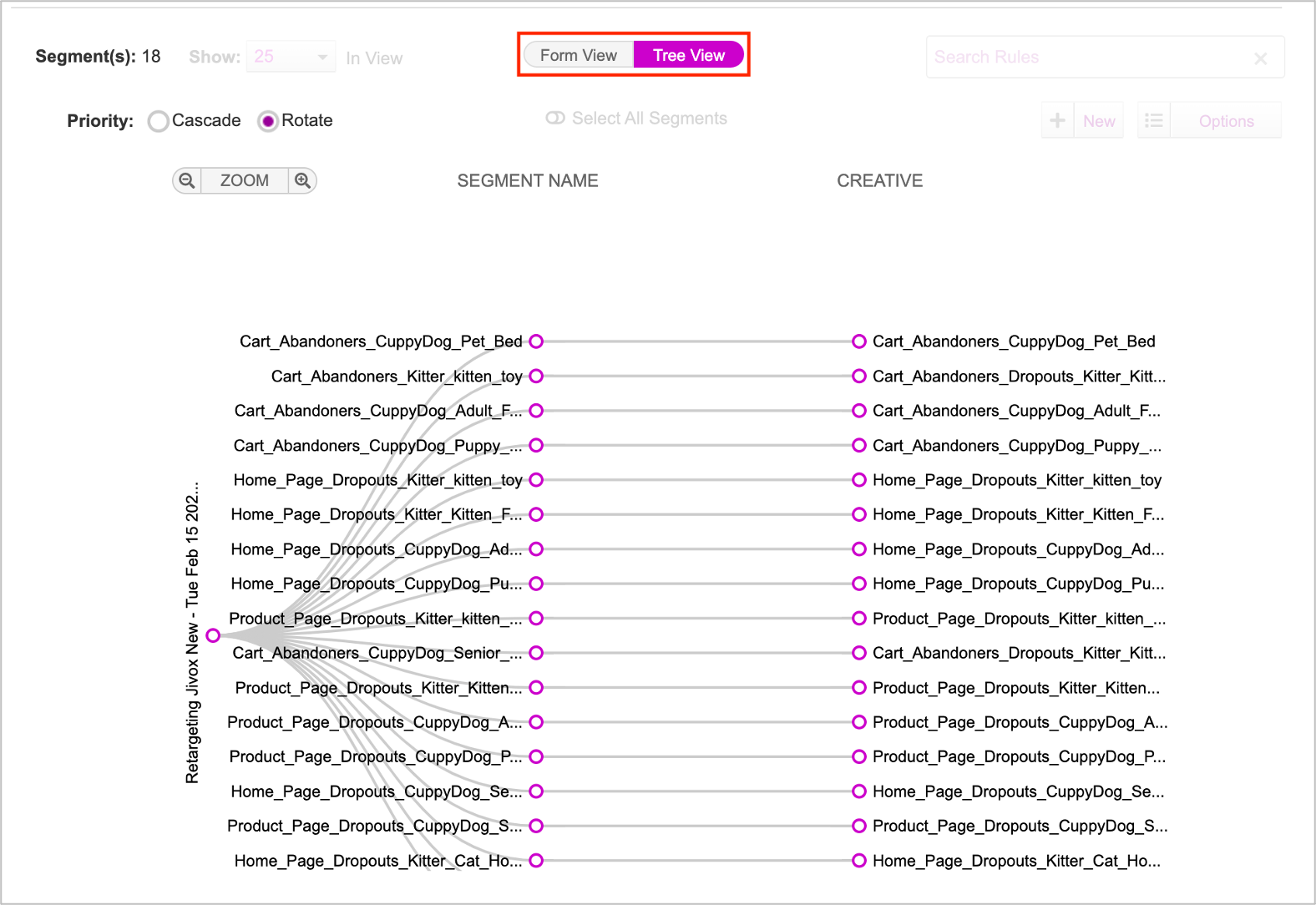
The nodes on the left represent the Segments that were created. These segments house the triggers that were set up.
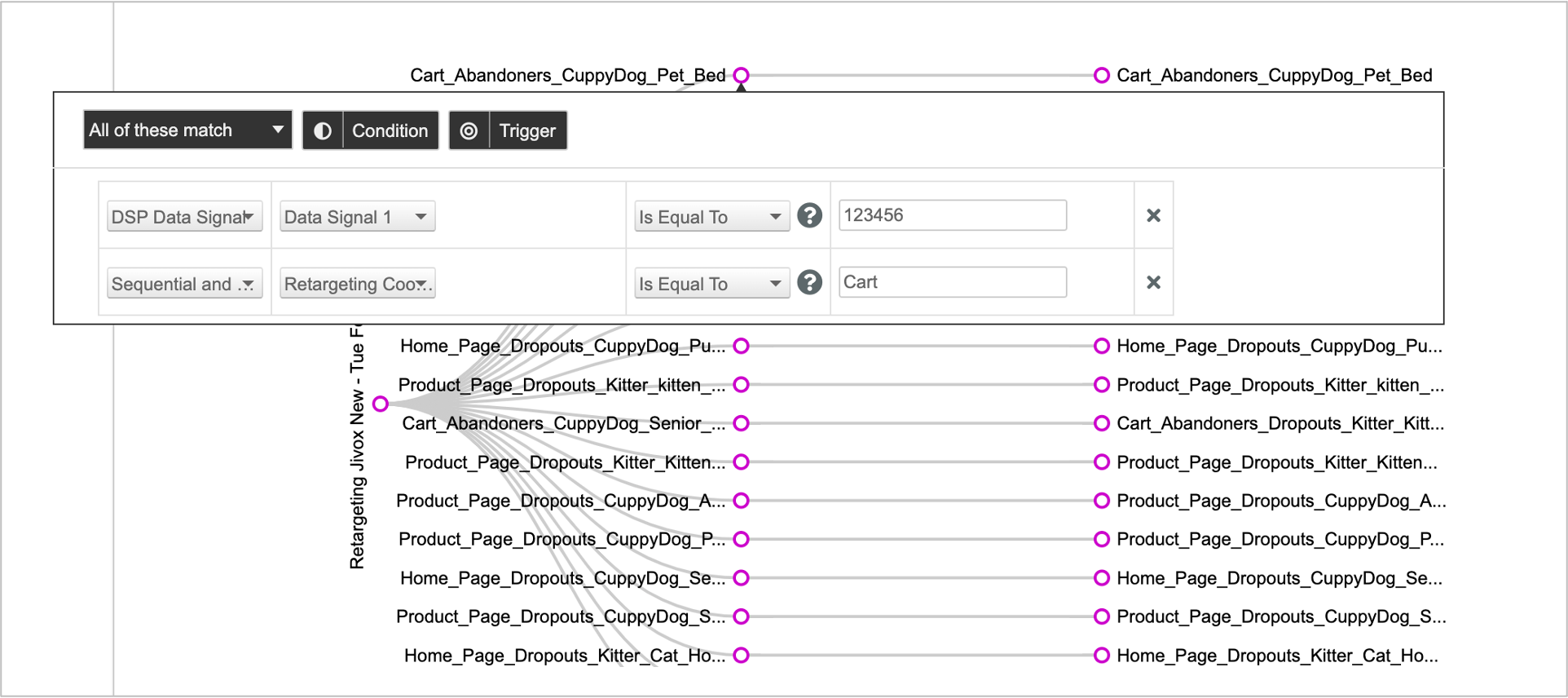
The nodes on the right are the creative variations that are associated to the segments. You can hover over each node to preview the creative variation.
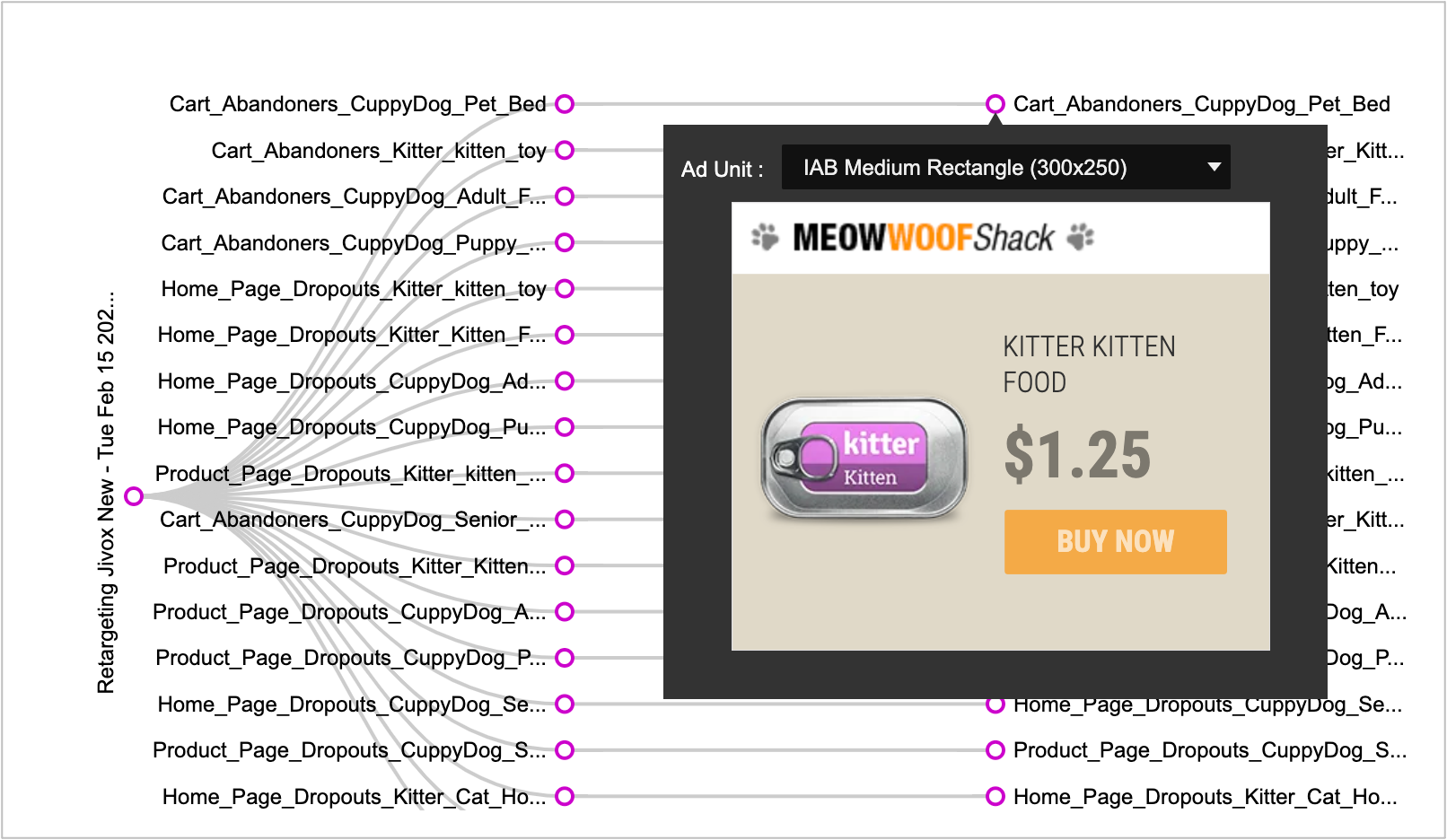
Whenever, the conditions set in each segment match, the corresponding creative variation will be displayed.
The last step on the campaign setup is to save the campaign. Once you are done, scroll down, and update the Campaign Name as required. By default, the campaign will be named based on the Ad that you have selected. Enter a Click-Through URL and click Save Campaign.
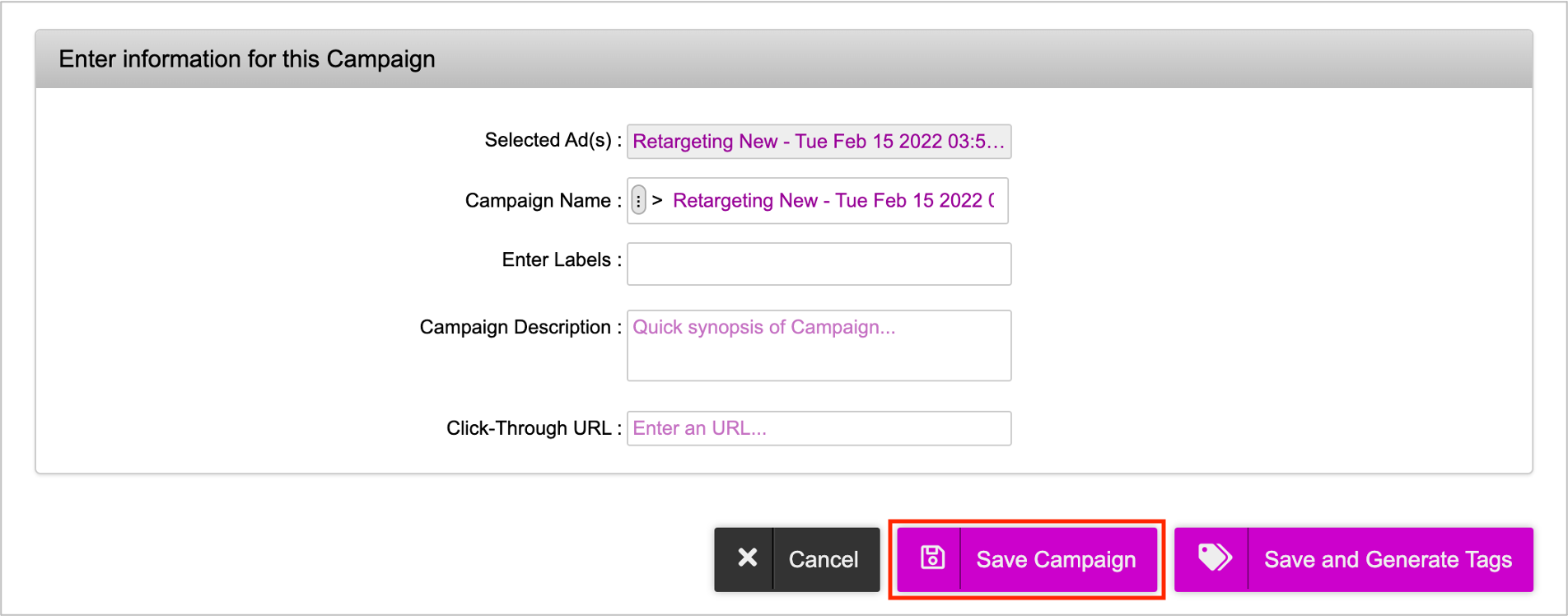
You will be directed to the Campaigns dashboard that will show the campaign that was created.
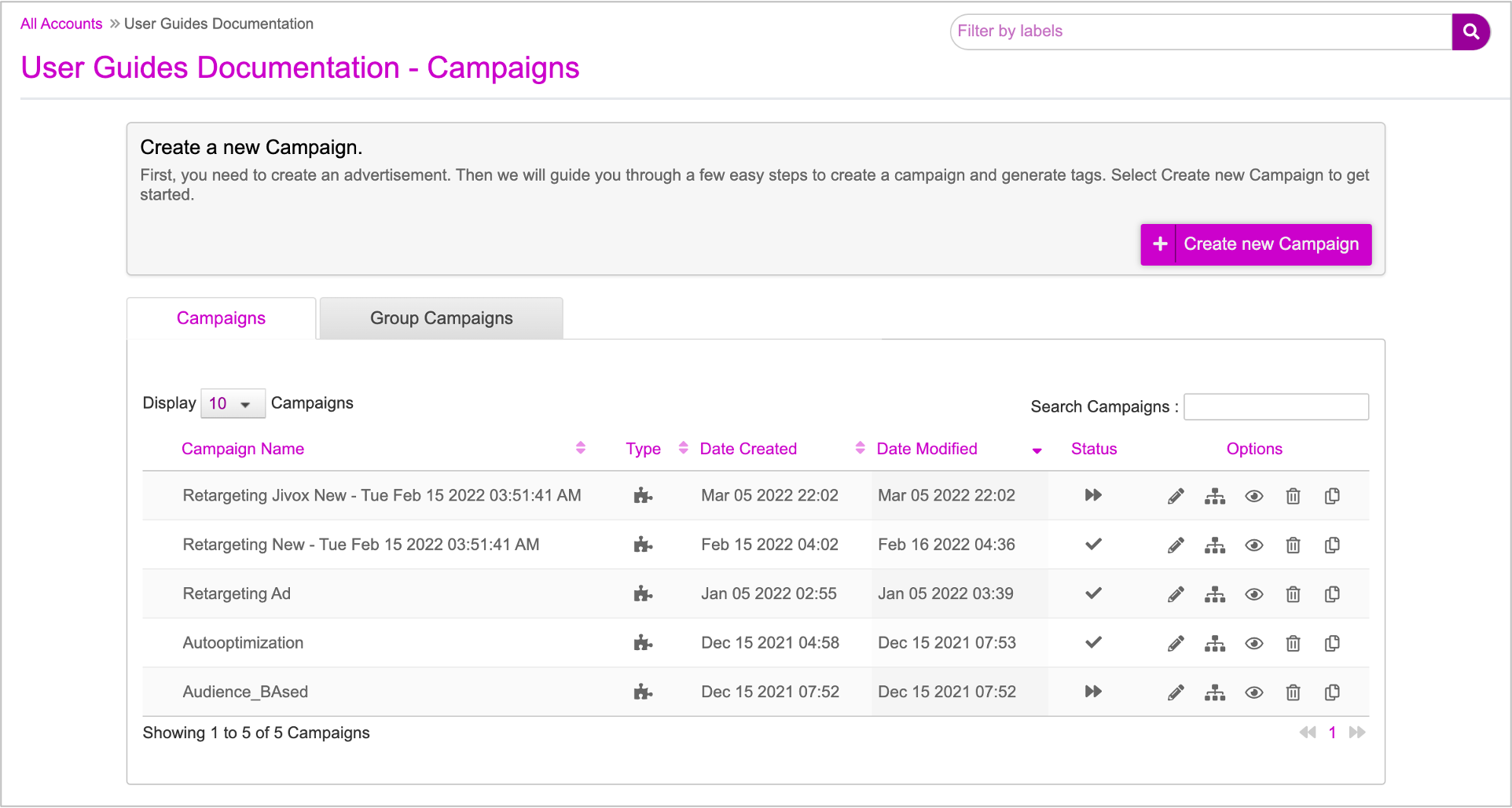
Now let's go ahead check the creative preview. Click the eye icon under the options column of your campaign and click Creative Preview.
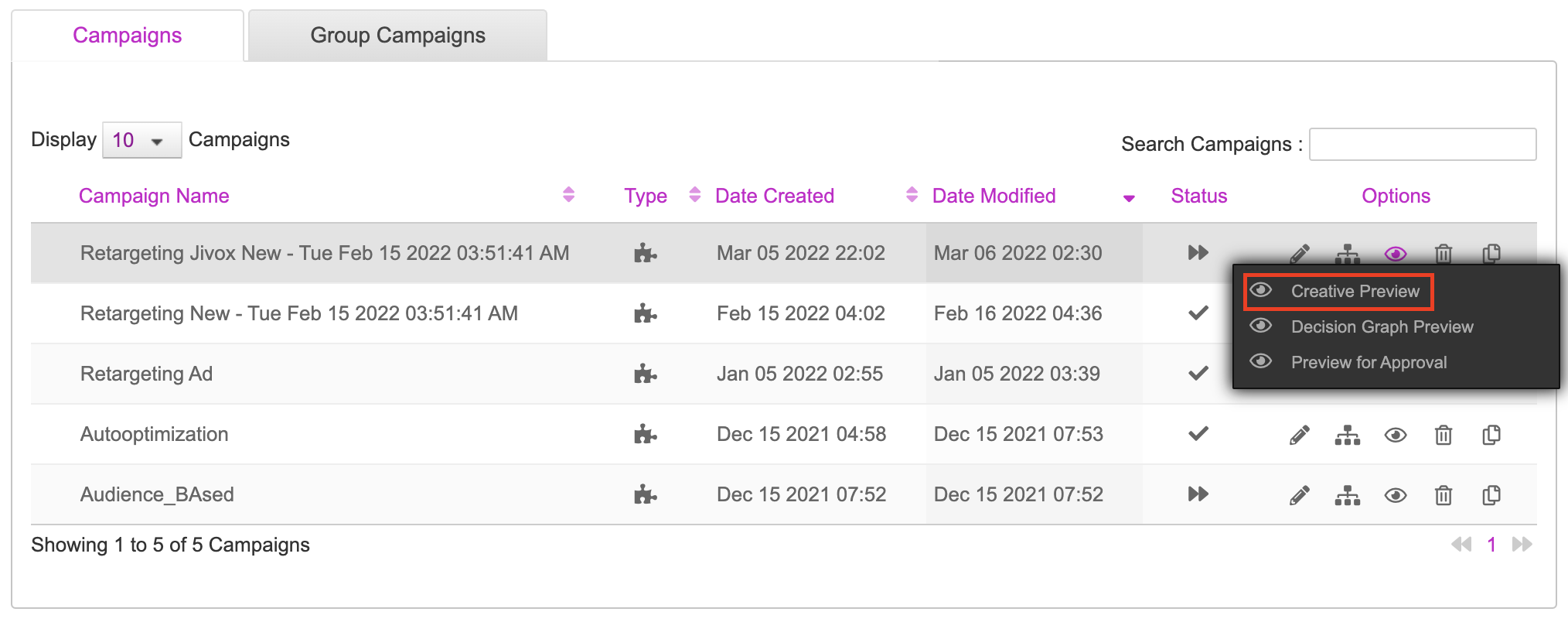
Here's a sample of the preview.
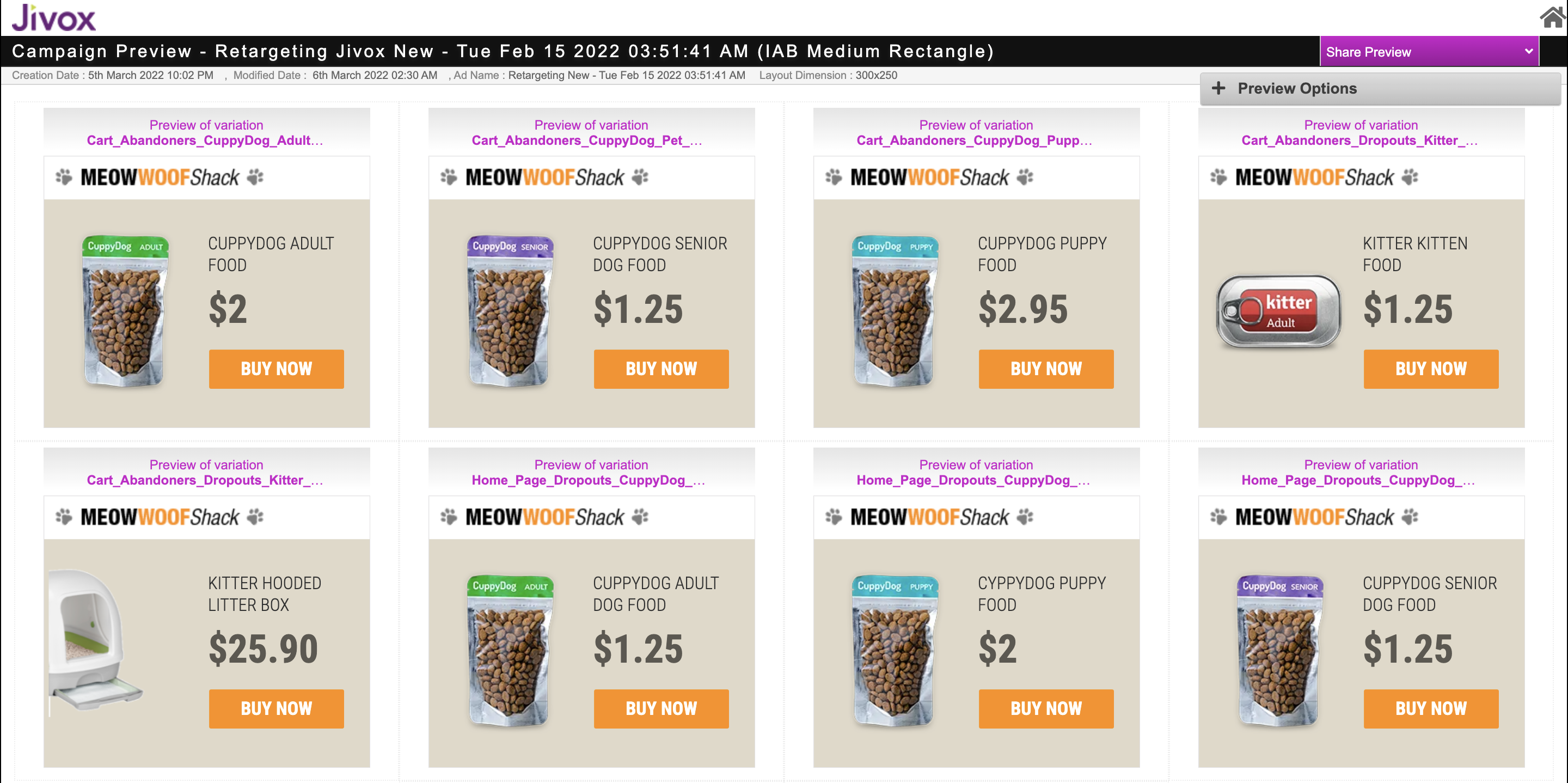
Next, let's go ahead and generate tags for the campaign. See Generating Tags.
Resources
| Item | Description |
|---|---|
| Creative Master | This is a 300x250 Creative Master |
| Assets | These are the image assets to go with it |
| Asset Source | This is the complete Asset Source to be imported |
| Mapping Document | This is the Mapping Document used in this campaign |
Next Steps
Here's what you must do next.
- Generate the Creative Preview and send it for approvals if required.
- Generate Tags
- Third Party Trackers
- Configuring Publisher and Placement
If you want to generate multiple tags at once, use the Bulk Tag Generation feature.